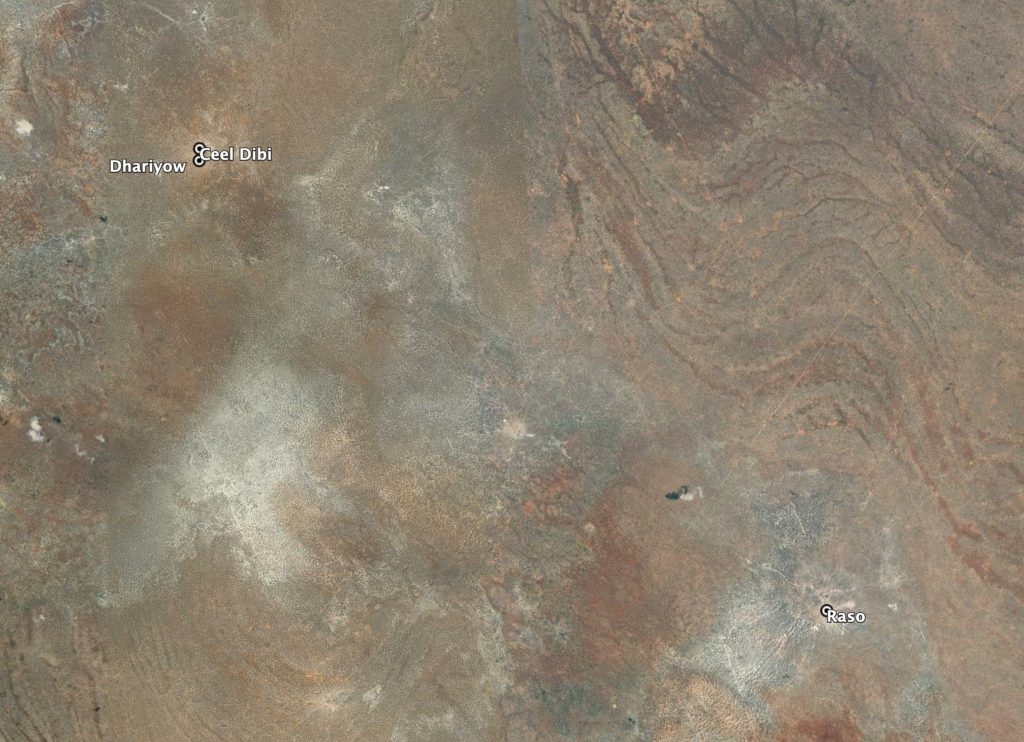Incident Code
Incident Date
Location
Geolocation
Geolocation
Airwars Assessment
(Previous Incident Code: SOM031)
US drones and jets reportedly killed between 150 and 200 alleged members of al Shabaab in a strike on a training camp in Somalia, 120 miles north of Mogadishu. There are currently no associated reports of civilian harm.
The total killed could in fact be higher. The district governor for Buloburte told the BBC’s Somali language radio service that many more than 150 were killed, including 18 senior members of the group. The US said as many as 200 people were at the camp when the strike hit.
Navy Capt. Jeff Davis, a Pentagon spokesman, said “that there were no known civilian casualties.”
Al Shabaab for its part said the US was over-exaggerating the casualties caused by the strike. Sheikh Abdiasis Abu Musab, a spokesperson, told Reuters: “The US bombed an area controlled by al Shabaab. But they exaggerated the figure of casualties. We never gather 100 fighters in one spot for security reasons. We know the sky is full of planes.” He did not provide an alternate casualty figure.
A Pentagon spokesperson told journalists: “The fighters were there training and were training for a large-scale attack. We know they were going to be departing the camp and they posed an imminent threat to US and [African Union] forces.” He added: “It was an air operation. Initial assessments are that more than 150 terrorist fighters were eliminated.”
The US said it had had the base under observation for several weeks. The strike hit during what US official said appeared to be a graduation ceremony. US aircraft fired several bombs and missiles at the al Shabaab fighters who “were standing outdoors in formation“.
An eye witness, camel-herder Bashir Dhure, told the Guardian: “All nearby places were caught on fire and no one knew what was happening. In the morning I could see the smoke coming from the bombarded training facility.
“It was like a burnt house. Everything turned burnt. I saw three vehicles burnt down. Al-Shabaab fighters were collecting dead bodies. They were put on trucks and took out of the village. We do not know where they were buried.”
After the strike, al Shabaab fighters searched for “spies”, Dhure said. This was corroborated by the district governor who told the BBC the terrorists were confiscating phones and imprisoning people in a desperate search for whoever might have tipped the Somali and US authorities to the presence of the camp.
Two al Shabaab commanders were claimed at the time to have been killed. Yusuf Ali Ugas was described as an influential preacher, recruiter and regional commander. Mohammed Mire was reported to be a leading member of the group’s finance wing. Both were later found to be alive, as Africa Confidential reported.
Unnamed witnesses told Voice of America’s Somali service the aircraft made two passes over the camp, firing three missiles each time. Two Somali intelligence officials told Associated Press the training camp was in a forested area and was al Shabaab’s main planning base. One official said the targeted fighters were planning on attacking a drone base in the region.
Pentagon Press Secretary Peter Cook later said: “On Saturday, March 5, the US military, in self-defence and in defence of our African Union Mission in Somalia (Amisom) partners, conducted an airstrike in Somalia against Raso Camp, a training facility of al Shabaab, which is a terrorist group affiliated with al Qaeda. The strike was conducted using manned and unmanned aircraft. The fighters who were scheduled to depart the camp posed an imminent threat to US and [Amisom] forces in Somalia.
The removal of these fighters degrades al Shabaab’s ability to meet the group’s objectives in Somalia, including recruiting new members, establishing bases, and planning attacks on US and Amisom forces. We continue to assess the results of the operation and will provide additional information as and when appropriate.”
Peter Pham, director of the Africa Centre at the the Atlantic Council thinktank told the Wall Street Journal: “What was surprising was that [al] Shabaab felt confident enough to assemble in such a way… It may not hold territory like it held back five or six years ago, but it is far from being defeated and one can argue that the threat has actually expanded with the numerous attacks that it has carried out not only in Somalia, but across the border in northeastern Kenya.”
“That al Shabaab had that many recruits in training at just one location… is a worrying indicator of the group’s continued relevance and its power to attract… The fact that al Shabaab feels emboldened enough to gather so many together in one place, these are hardly signs of a group on the run,” Pham told the Guardian.
This was the highest death toll from a single attack hitherto recorded. The unprecedented death toll outstripped the previous highest: 81 killed in Pakistan in October 2006.
In a subsequent FOIA response obtained by journalist Joshua Eaton in May 2019, AFRICOM again confirmed it had carried out on a strike on what it says was “an al-Shabaab name objective” in Raso, Somalia on March 5th 2016.
Key Information
Geolocation Notes
Reports of the incident mention that the strike targeted an Al Shabaab training facility called Raso, between or near the villages Dhariyow and El Dibi. The coordinates for the village Raso are: 3.55507, 45.05592. According to various mapping sources the settlements Dhariyow and El Dibi (or Ceel Dibi, most likely referring to a well) find themselves right next to each other at these coordinates: 3.66587, 44.90105. Due to limited information and satellite imagery available to Airwars, we were unable to verify the precise location of the camp and strike.

Dhariyow, Ceel Dibi and Raso
Imagery: Google Earth
